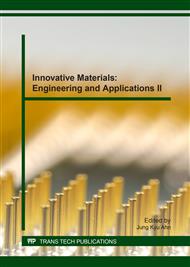p.479
p.489
p.496
p.502
p.510
p.516
p.521
p.527
p.533
Numerical Study of Taylor Cone Dynamics in Electrospinning of Nanofibers
Abstract:
Nanofibers produced by electrospinning are attractive for a large variety of applications in material science. Formation of Taylor cone is an integral part of electrospinning process. To understand deeply its formation, a two-phase electro-hydrodynamic simulation under the volume-of-fluid (VOF) model is proposed. The electric force in such systems acts only at the interface and is zero elsewhere in the two fluids. Continuum surface force (CSF) model is adopted to compute the electric field force at the interface. For the study case, transient analyses showed the moving flow fronts and their interactions with the applied electric field. Two symmetric vortices, which occur in Taylor cone, will increase the solution velocity. A beaded nanofiber can be formed owing to the beads occur in cone jet. The numerical results were consistent with previous studies. According to the numerical results, the formation mechanism and nanofiber dynamics of the Taylor cone in a multiphase flow were well disclosed for deep explanation of the process.
Info:
Periodical:
Pages:
510-515
Citation:
Online since:
February 2017
Authors:
Price:
Сopyright:
© 2017 Trans Tech Publications Ltd. All Rights Reserved
Share:
Citation:


